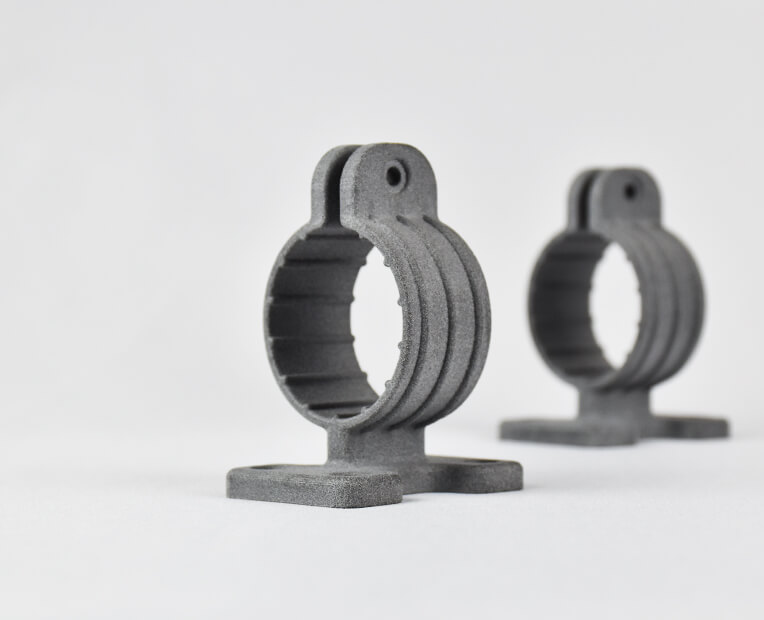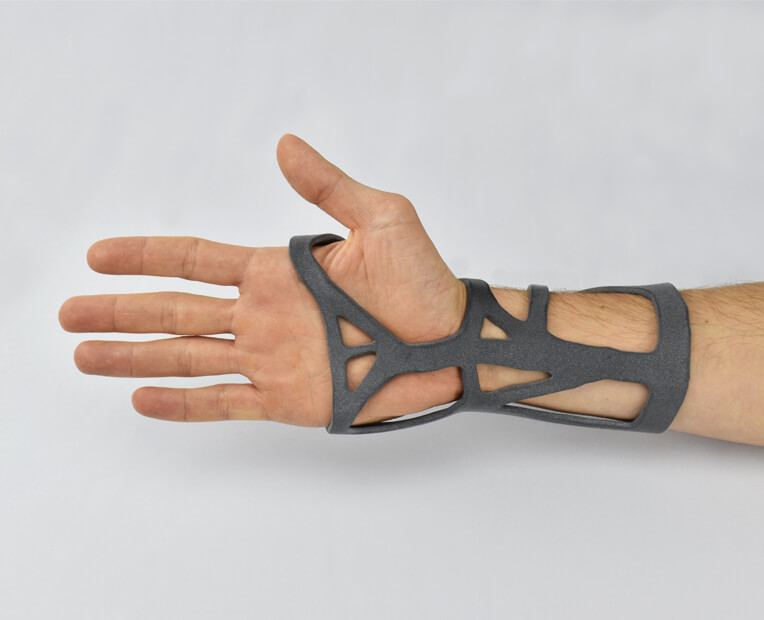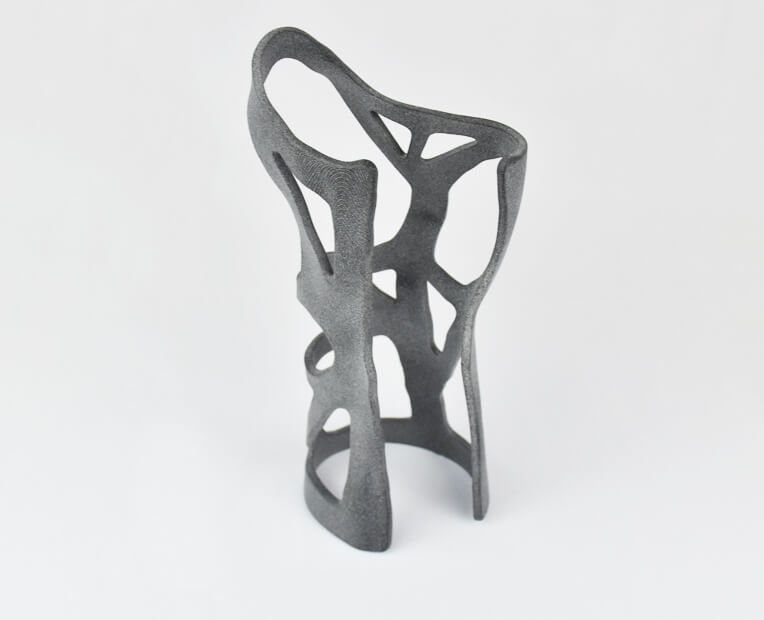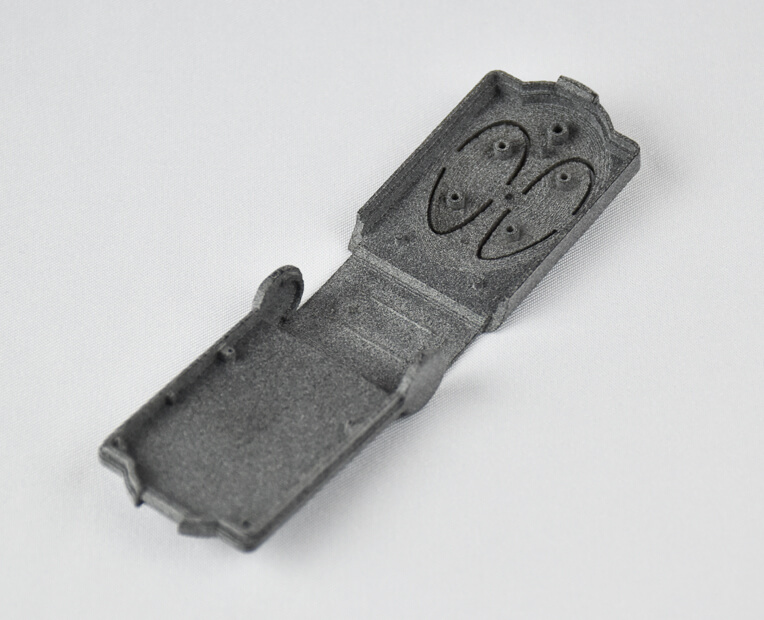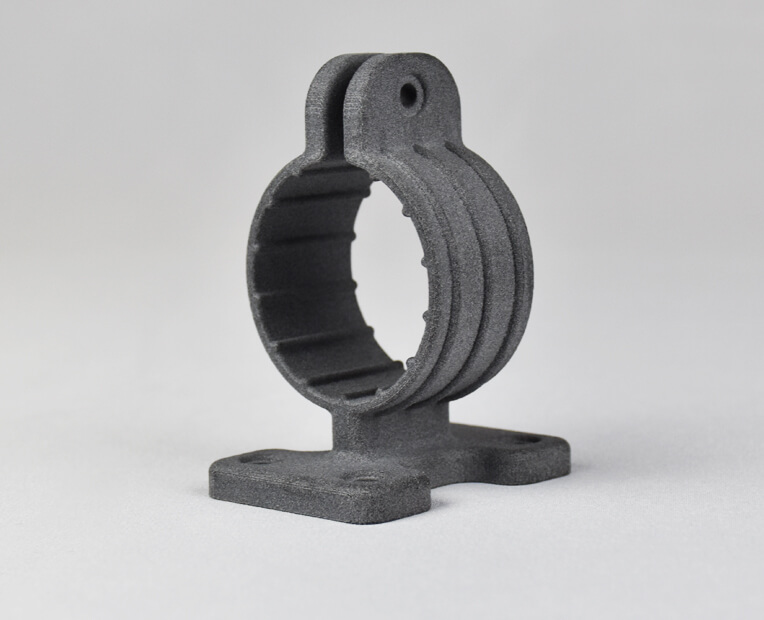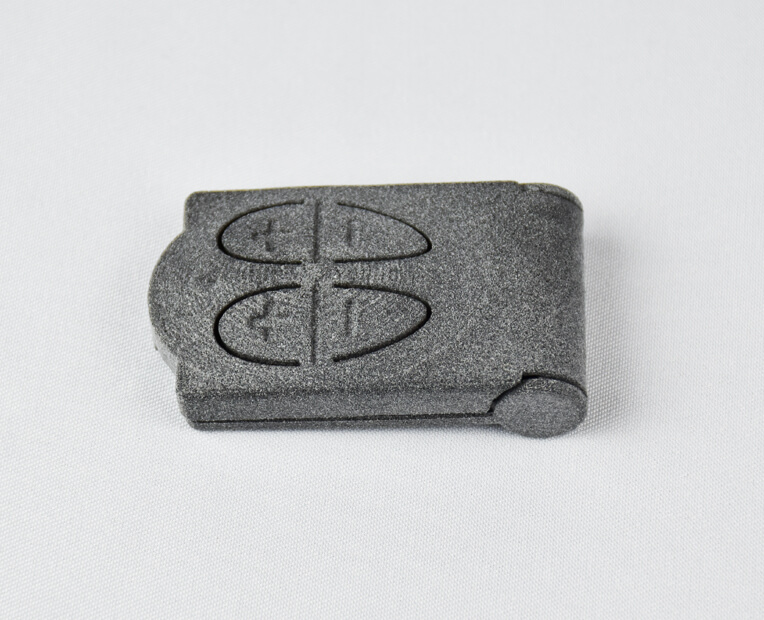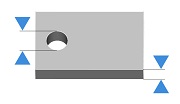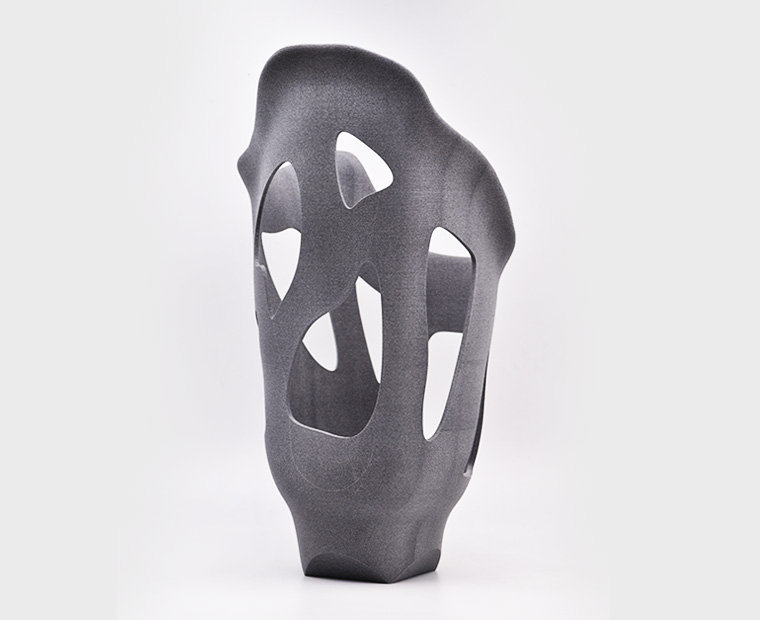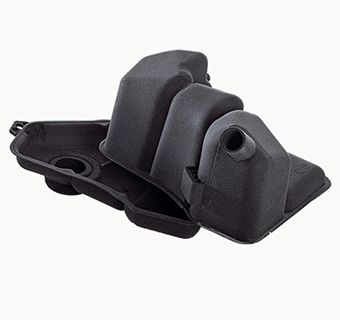Home » 3D Printing Materials » Jet Fusion Technology for 3D Printing » PA11 HP
PA 11 HP
3D printing material
Discover the benefits and applications of our PA 11 HP 3D printing material. This alternative to Nylon PA 12, based on 100% renewable sources, can help you bring your most demanding projects to life.
Colors
Finishes
Characteristics
PA 11 HP Material Guide
What is PA11 HP?
PA11 HP is a bio-derived powder with exceptionally high toughness. This material has the particularity of offering high ductility and impact strength for all applications. Do you need durable parts able to withstand high mechanical loads and stress? PA11 HP can be the perfect choice for you.
Our PA11 HP is based on 100% renewable biomass sources. The Castor seed is extracted from the castor plant to make oil. The oil is then converted into the monomer (11-aminoundecanoic acid), which is finally polymerized into the Polyamide 11.

This PA11 material is a sustainable alternative to PA12, offering interesting properties for your components requiring skin contact. Parts 3D printed with this PA11 material are grey.
PA11 HP is printed using Multi Jet Fusion technology. Please keep in mind that you will have to respect specific design guidelines to avoid any problem during the additive manufacturing process. Be sure to check the material design guidelines while creating your 3D file and before you send it for 3D printing.
What are the possible applications for this material?
Medical
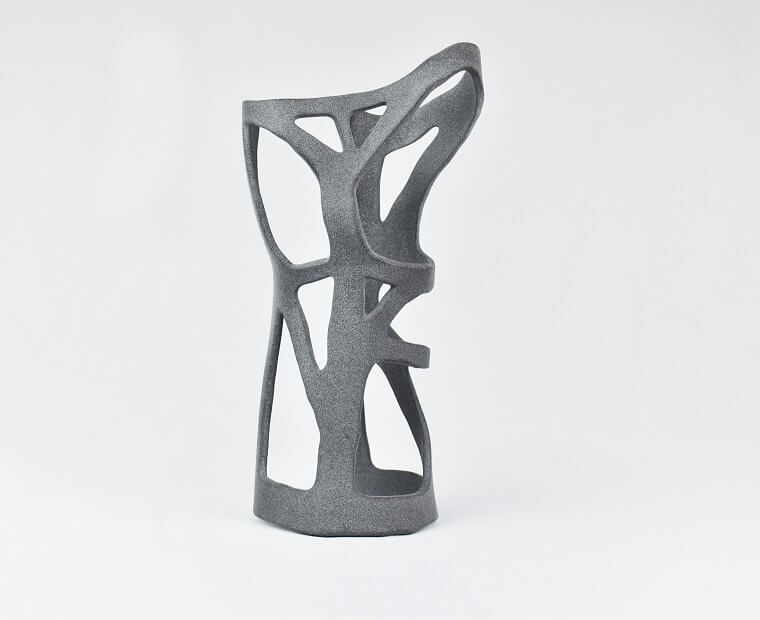
Approved for skin contact
As this material is resistant and approved for skin contact, making it possible to create made-to-measure medical devices such as orthopedic parts.
- Impact resistance
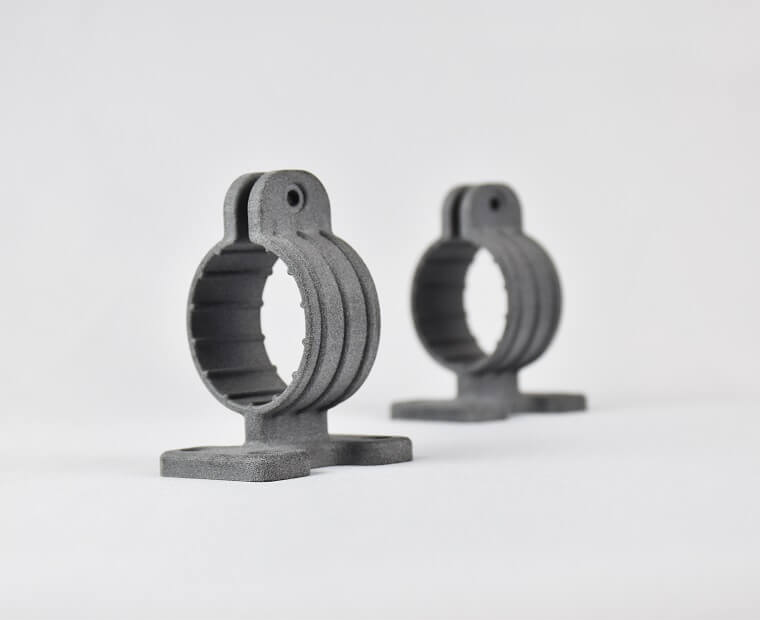
Charpy impact unnotched: 198 kJ/m2
PA11 HP has a good impact resistance making it particularly adapted to the automotive sector for example, to manufacture car interior components.
- Living hinges
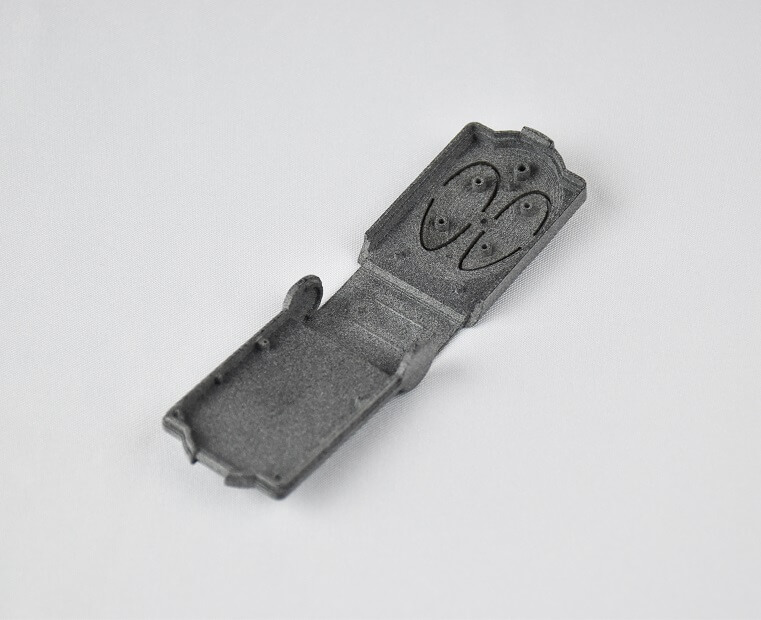
As PA11 HP can withstand high mechanical loads and stress which makes it a perfect solution to manufacture living hinges.
Pricing
The printing price of your design is calculated automatically the moment it is uploaded. As you modify your object (changing material, finishing, size, using our hollowing feature, etc.) you will note that the price changes automatically. The pricing is based on a series of factors, including total volume, object size, and bounding box – to name a few.
The estimated shipping time is also calculated automatically as the object is uploaded and each time you make a modification on it. Delivery time should be added to processing time.
For more information, check our pricing page.
How does Multi Jet Fusion 3D printing technology work?
Sculpteo uses Multi Jet Fusion technology to manufacture PA11 HP parts.
The Multi Jet Fusion technology’s process is similar to binder jetting technology as it uses a liquid binding agent to create the layers of your object. In addition, a detailing agent is used to obtain fine details and to smooth the surface of the object. Layer by layer, the object is created from the combination of the powder, the liquid agents (fusing and detailing agents), and energy (heating process).
The HP Multi Jet Fusion process is a powder-bed technology that is faster than Selective Laser Sintering. After the parts are 3D printed, the building platform is placed into the post-processing station that cools the parts and prepares them for cleaning.
Maximum size | 274 x 370 x 380 mm |

The maximum size of your models are limited by the physical size of our 3D printers – nothing can be printed larger than the printer bed. |
Due to the printing process, your objects will have upskin and downskin. Upskin is a little concave, whereas downskin will show slight convex. Upskin will appear on the top of your object, downskin at the bottom. This is important to consider when you set the orientation of your 3D model. If the upskin and downskin will affect your design, set the orientation beforehand and we will honor it, if you are not sure, our technicians will choose the best one. |
| Standard layer thickness | 100µm |
| Accuracy | X-Y : +/- 0,3 % (min : 0,3mm) Z : +/- 0,7 % (min : 0,6mm) |

| Minimum wall thickness | 1mm |

| Stemmed elements with support | 1mm |
| Stemmed elements without support | 1.5mm |

Minimum height and width details | Embossed : 0.5 mm
|
| Ratio Depth / width | 1/1
|
| Enclosed parts ? | Yes |
| Interlocking parts ? | Yes |

Our material has the ability to print the most complex designs of our materials . An example of a complex design is a volume enclosed within another volume, like a chain or a ball joint connection. Our printers have the ability to print a fully interlocked chain, with no support structures to remove. |
| Minimum spacing between fixed walls | 0.5 mm |
| Minimum clearance between parts | 0.5 mm |

For a successful 3D print a minimum clearance between objects is required to allow excess material to be sand blown out. If this space is not left within the design, the object will be a solid. This is particularly important for articulated objects – as the space left between the walls will define the object’s ability to move.
Clearance should be at least 0.5 mm, however that is the minimum for small objects. Larger objects require more space between their parts. This is due to the HP printing process. Our printer beds are heated during the process, and larger objects are heated for longer periods. A small space between large objects runs the risk of melting together as it remains under heat for a long period of time. In some other cases, holes should be added to allow us to drain for the excess powder material within the clearance.
| Hollowing ? | Yes: 5mm |
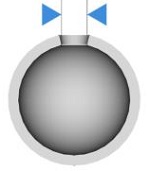
Our online hollowing optimization tool has the ability to greatly reduce the price and the weight of a print by reducing the amount of material used. Using the tool requires adding two holes to your model, which will serve as the drain for the excess powder material within the object. The minimum size of these holes is determined by our website. Otherwise, it is possible to hollow your object manually in your 3D modeling software. |
They use Multi Jet Fusion PA 11:
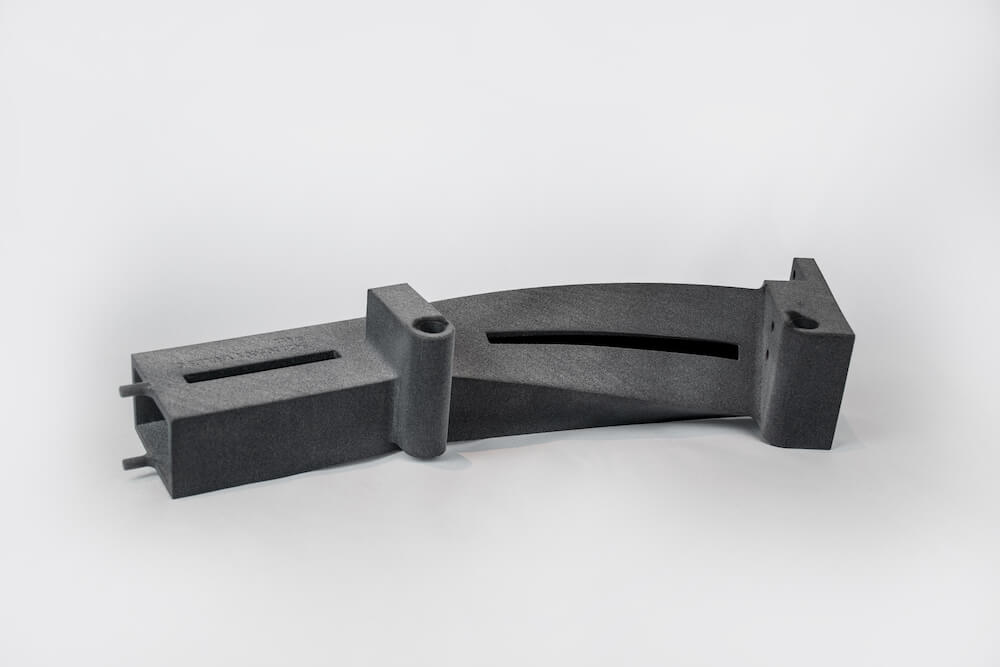
Streamlines its production process quickly and efficiently using AM
Ready to 3D print with PA 11 HP?
With Sculpteo’s online 3D printing service you’re just a few clicks away from professional 3D printing. Your 3D model is printed with the highest quality and delivered straight to your door.
Get started now!


 Connect with Google
Connect with Google Connect with Facebook
Connect with Facebook